January is one of the best months to travel, allowing you to start the year with a big adventure. In much of the Northern Hemisphere it’s the heart of winter, perfect for those seeking snowy landscapes and winter sports. Head to Finnish Lapland or Norway’s Finnmark Plateau to try out dog sledding and to see the Northern Lights dance across the night sky. Or experience a quieter side to popular destinations such as the Dolomites or Turkey’s Cappadocia, which are even more captivating when blanketed in snow.
In Asia, January is an ideal time to explore as the dry season prevails, making it perfect for visiting countries like Thailand, Vietnam, and the Philippines. It’s also the ‘small dry’ season in many parts of Africa, and an ideal time for exploring its offshore island nations like Cape Verde and the lesser-known São Tomé and Príncipe. South of the equator it’s the height of the summer, and an ideal time to visit New Zealand, as you’ll experience long sunny days perfect for outdoor adventuring.
Whether you're chasing winter sun or prefer a sub-zero adventure, January offers something for every type of traveller. Here are 20 of our favourite places to travel to in January.
1. The High Tatras Mountains, Slovakia

- Season: Winter
- Temperature: 1°C high/ -7°C low
- Time zone: GMT+1
- Currency: Euro
- Best for: Thermal baths and winter hikes
The High Tatras Mountains are gorgeous year-round, but particularly so in winter when the rocky peaks are sprinkled with powdery snow, and Alpine lakes are surrounded by snow-laden pine trees.
Base yourself in the ski resort of Stary Smokovec (1,025m/ 3,362), and you’ll be in the heart of a winter wonderland. The area is known for skiing, but it’s also a great spot for winter hiking - climb up the snowy trails to Green Lake, or tramp through the idyllic Mengusovska Valley. Warm up and soothe your aching muscles in one of the area’s natural thermal pools.
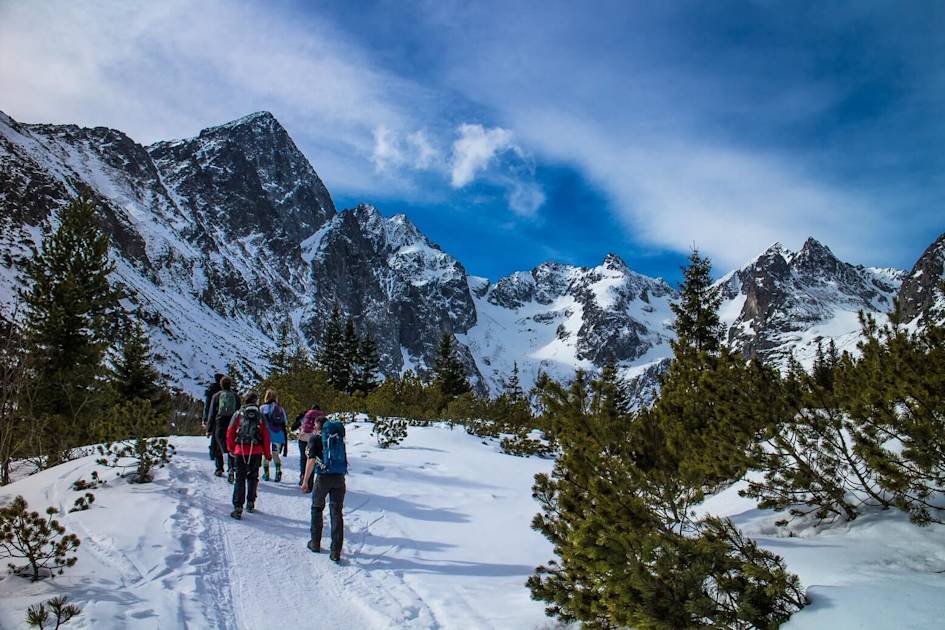
The High Tatras Mountains are cold in winter, and there’s often snowfall, so you’ll want to wrap up warm. However, this is also one of the driest months of the year, so you might experience clear blue skies and snow glistening in the sun.
How to get there? The closest international airport to the High Tatras is Krakow, in Poland. Hire a car or get a private transfer across the border to Stary Smokovec (which takes around two and a half hours). You can also get coaches to Stary Smokovec from central Krakow.
2. Fort William, Scotland

- Season: Winter
- Temperature: 4°C high/ -1°C low
- Time zone: GMT
- Currency: Pound Sterling
- Best for: Learning winter mountain skills
Fort William is one of the outdoor hubs of the Scottish Highlands. It's a buzzing mountain town and a destination for adventure seekers all year round. Head to the nearby Nevis Range for skiing and snowboarding opportunities. They're named for the Scotland's highest mountain, Ben Nevis (1,345m/ 4,412ft), and in the Grampian mountains that surround Fort William, there's a whole lot of hiking.
January is the ideal time of year to go one step further and develop your winter mountaineering skills, under the tutelage of an experienced mountain leader. Learn how to use an ice axe and crampons, plus how to survive in winter conditions - then test it out with an ascent of the mighty Ben Nevis.
“I remember, really vividly, the first time I went winter climbing and just having this really intense experience,” says guide Connor Holdsworth."You're really fighting for every inch in no way that I've ever experienced anywhere else in the world. It's absolutely wild - type two fun, at its best.”

On a winter hike in the mountains, you must anticipate extreme weather conditions - fog, high winds, snow and rain. January temperatures in Fort William average between 0°C to 3°C, but on Ben Nevis the temperature ranges from -1°C to -6°C, and wind chill makes it feel colder. Still, Fort William has some cosy pubs with log fires where you can warm up afterwards.
How to get there? Fly into Glasgow International Airport (90 miles away) or Inverness Airport (78 miles away) and catch a bus from either city centre to Fort William. You can also travel by train from London to Fort William - the Caledonian Sleeper is a luxury overnight train service.
3. São Tomé and Príncipe, West Africa

- Season: ‘Gravanito’ (the ‘small dry season’)
- Temperature: 29°C high, 22°C low
- Time zone: GMT
- Currency: São Tomé and Príncipe dobra
- Best for: Exploring the ‘African Galapagos’
If you’re looking for an off the beaten track adventure, we recommend a trip to the West African island nation of São Tomé and Príncipe, one of the world’s least visited destinations. On São Tomé, learn about the island’s complex colonial past by visiting historic cocoa and coffee plantations. Hike through the high-altitude rainforest of the biodiverse Obo National Park, or take a boat trip to the Ilheu das Rolas islet, where you can stand on the equator or snorkel off the deserted beaches.
But it’s tiny, jungle-carpeted Príncipe that will really blow your mind. It’s a UNESCO biosphere reserve, and as you hike through the Parque Natural do Príncipe you’ll understand why - you’ll pass giant ocá trees, colourful rare orchids and forest canopies alive with butterflies. Take time to explore Príncipe’s pristine beaches, including the idyllic Praia Banana with its golden sands, crystal waters and striking boulder formations.
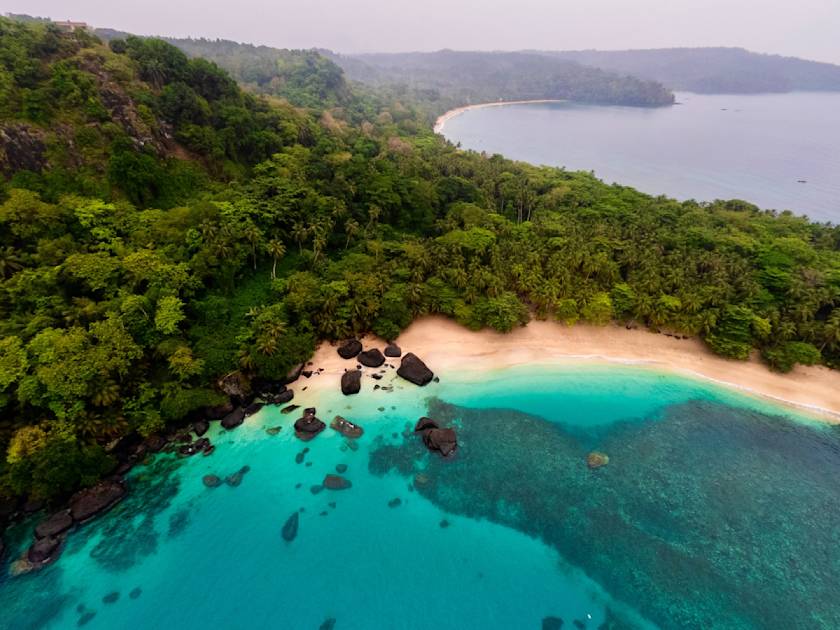
“Throughout my 10 days there I only bumped into a couple of dozen other travellers,” says Marta Marinelli, Adventure Expansion Manager. “I often found myself to be the only person hiking in the forest or swimming at a totally deserted beach.”
Due to the islands’ proximity to the equator, they experience little seasonal variation - temperatures hover at around 27°C year-round. There are two rainy seasons (from February to May and a shorter one from October to November). The small dry season, known as the ‘gravanito’, occurs in December and January, making this a good time to visit.
How to get there? Fly to São Tomé International Airport. There are direct flights from Lisbon with TAP Air Portugal.
4. Finnmarksvidda, Norway

- Season: Winter
- Temperature: -3°C high, -15°C low
- Time zone: GMT+1
- Currency: Euro
- Best for: Dogsledding and aurora-spotting
Finnmarksvidda, also known as the Finnmark Plateau, is 8494 square miles (22,000km2) of untouched wilderness in northern Norway, and the homeland of the indigenous Sámi people. In the winter, Finnmarksvidda is carpeted with a thick blanket of snow - it’s a dreamy spot to try husky dog sledding.
Stay in a remote mountain lodge and you’ll have excellent opportunities for stargazing, as the skies are untarnished by light pollution. This is one of the best places in Norway to watch the northern lights too.
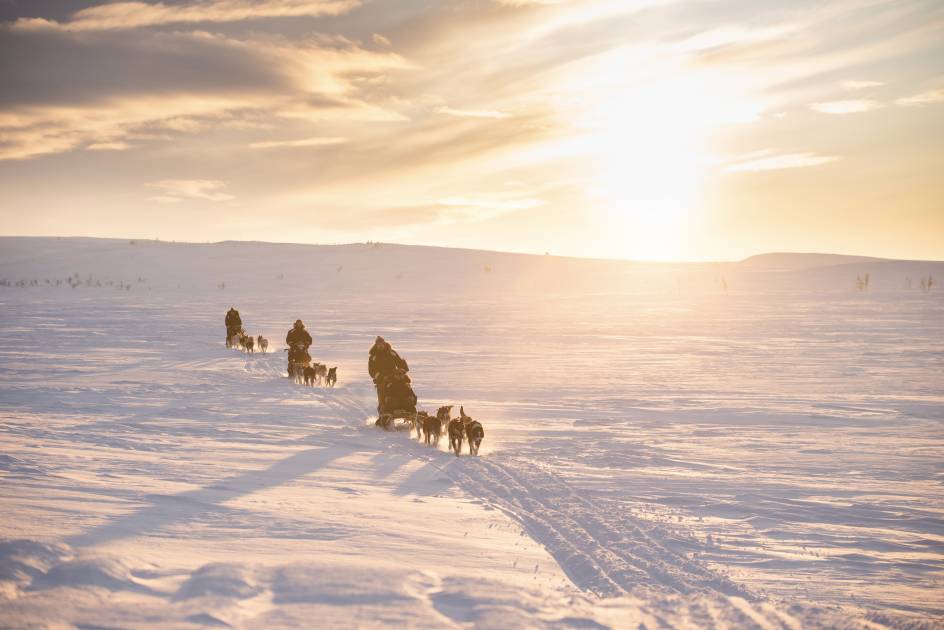
Finnmarksvidda has some of the coldest winters in Norway. The lowest temperature ever recorded is -51.4°C, but average daily temperatures are -6°C. Your guide will provide you with a thermal suit for dog sledding, but make sure you bring plenty of layers. You can warm up after the day’s activities in the sauna.
How to get there? Fly to Alta Airport (there are transfers via Oslo) and get a short transfer to your husky lodge.
5. Palawan and Coron, The Philippines

- Season: Dry
- Temperature: 30°C high, 22°C low
- Time zone: GMT+8
- Currency: Philippine peso
- Best for: Tropical beaches and karst islands
Head out to the Philippines, an archipelago of more than 7,000 islands. After exploring the bustling capital of Manila, take a flight to the island of Palawan, known for its karst formations, tropical beaches and forested interior. Go sea kayaking from Port Barton, paddling out to discover locations such as Fantastic Reef and Starfishing Island Sandbar. Hike inland through the jungle to the 30m-high Pamuayan Falls, when you can try cliff jumping or swim in the natural pools.
We also recommend visiting idyllic Coron Island, which is a perfect spot to try scuba diving for the first time. To explore Coron, take a banca (small boat) tour around its limestone coastline, stopping off to have a dip or even explore via SUP. Kayangan Lake, named ‘the cleanest lake in the Philippines’, is an ideal picnic spot, as is the secluded Calachuchi Beach.
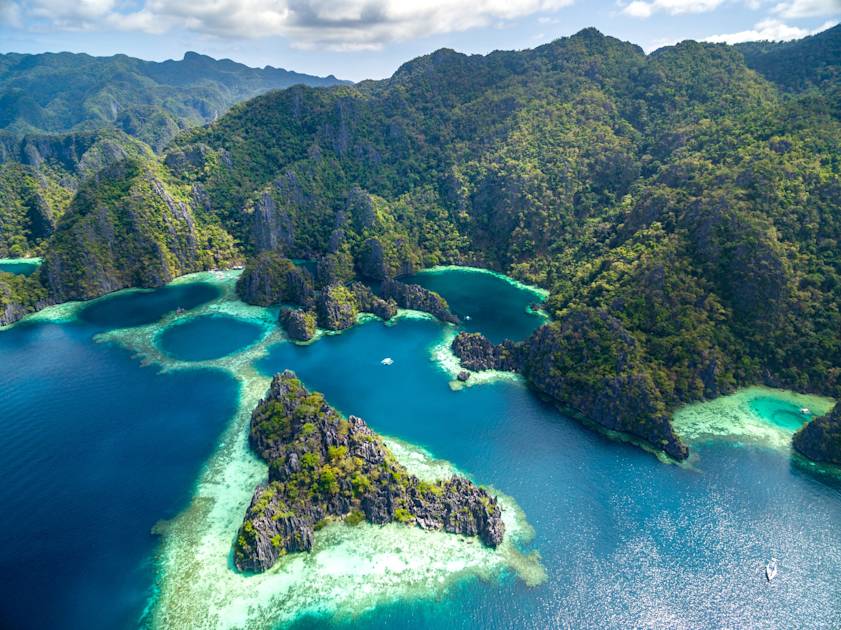
January is one of the best times to visit the Philippines, as it’s the start of the dry season (which runs from January to April) - the weather is warm but the foliage is still lush from the previous month’s rain. Expect daytime temperatures averaging 26°C, and a similar sea temperature.
How to get there? Fly to Manila International Airport and spend a couple of days exploring the capital city. From here, get a 90 minute domestic flight to Puerto Princesa, on Palawan Island.
6. Cappadocia, Turkey

- Season: Winter
- Temperature: 5°C high, -5°C low
- Time zone: GMT+3
- Currency: Turkish Lira
- Best for: Off season travel
Visit Turkey’s UNESCO-designated region of Cappadocia, with its iconic ‘fairytale chimneys’ and rock-cut houses during the winter, and you’ll get to experience it without the crowds. Explore the Göreme Open Air Museum – a cluster of monastic Byzantine artistry with rock-cut churches, chapels and monasteries. Spend the days hiking Cappadocia’s surreal valleys, visiting Uchisar Castle or - if the weather’s bad - the ancient underground city of Derinkuyu.
There’s also an option to book a hot air balloon ride across this fascinating region. In the evenings, hunker down in the rock-cut rooms of your boutique hotel, or unwind in a steaming Turkish bath.
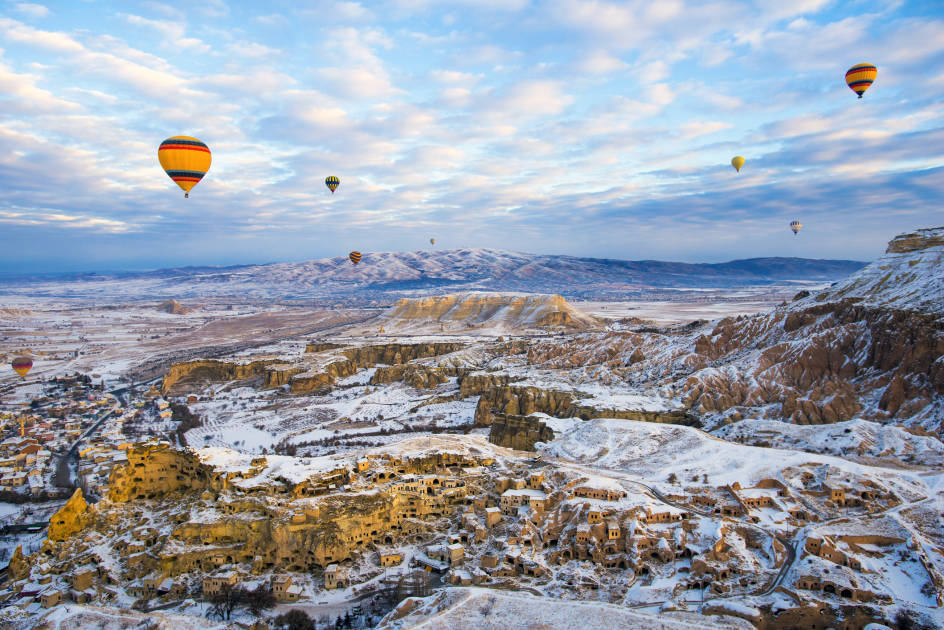
Cappadocia is hot in summer and cold in winter, with January daytime temperatures hovering between 2-4°C, and dropping below freezing at night. It often snows, and the fairytale landscape is even more enchanting when lightly dusted in snow. Even if it doesn’t, there are plenty of reasons to visit Cappadocia in January, including cheaper prices and fewer crowds.
How to get there? Fly to Kayseri Airport and then catch a taxi, shuttle or transfer to Cappadocia (driving time is around 70 minutes).
7. Finnish Lapland, Finland

- Season: Winter
- Temperature: -15°C high, -6°C low
- Time zone: GMT+2
- Currency: Euro
- Best for: Quintessential winter exploration
To prolong your Christmas spirit, head to the home of Santa Claus himself - Finnish Lapland.
“Everybody knows that Santa comes from Finland and from Lapland,” says guide Artturi Kröger. “And this isn’t something created for international guests. It’s something that is equally important for locals and families here as well.”
Travel beyond the Arctic Circle and into the icebound wilderness of Lapland's Pyhä-Luosto National Park, where you can stay in glass-roofed cabins, making it easier to see the aurora at night.
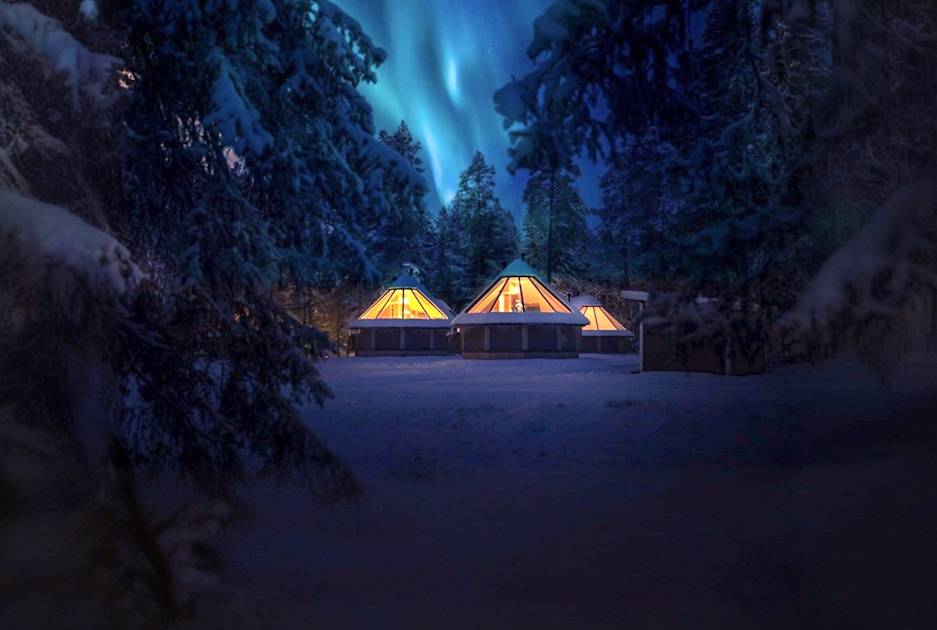
Spend your days snowshoeing in the Pyhä-Luosto National Park, crossing frozen valleys and tunturis, the remains of ancient mountains. Go on a snowmobile safari through the icy landscape, and try your hand at dogsledding. Evenings can be spent chasing the northern lights, unwinding in the sauna or warming up around a blazing log fire.
You’ll be travelling in the Arctic in the coldest month of the year - expect temperatures to average around -11°C, with only a couple of hours of daylight a day. If you’re new to cold weather travel, contact your trip provider for more information about what to wear on a sub-zero adventure.
How to get there? From Rovaniemi Airport (RVN) board the Skibus to its last stop in Pyhä - the latter takes around two hours.
8. The Sinai Desert, Egypt

- Season: Winter
- Temperature: 22°C high, 8°C low
- Time zone: GMT+2
- Currency: Egyptian pound
- Best for: Desert trekking
The Sinai Desert is located in the northeast of Egypt, between the Mediterranean Sea to the north and the Red Sea in the south. You can hike across it on a mini-expedition, guided by local Bedouins, with camels to carry your gear.
You’ll hike on little known trails past boulder-strewn wadis and lush oases, up rocky canyons such as the Telah Braika gorge. If you want a challenge, you can even climb to the summit of Jebel Um Shomer (2,587m/8,487ft) for panoramic views of the undulating desert and the sea beyond.
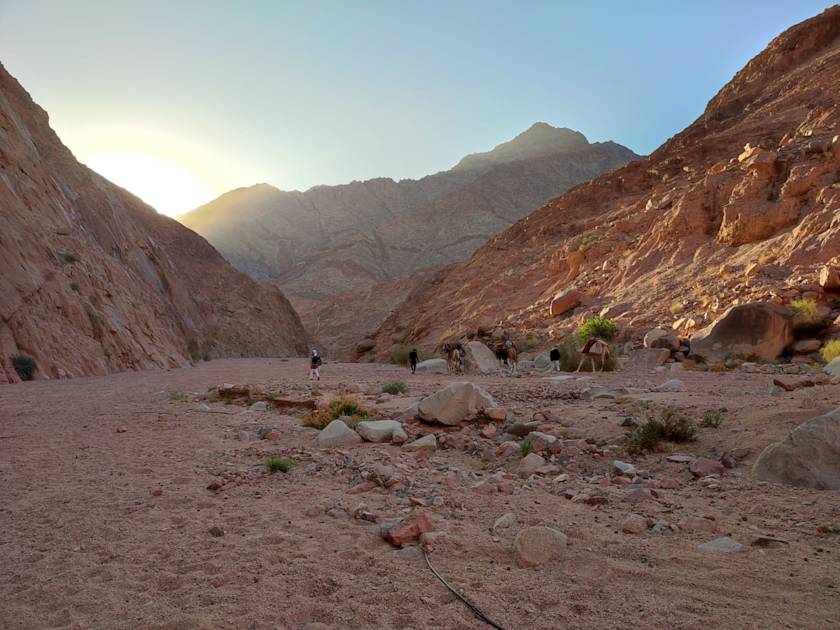
In the evenings, you’ll sleep out under the stars with your sleeping bag, staying warm around the campfire. Your Bedouin guides will show you how to prepare food on the fire, and share their knowledge of the desert with you.
“The guides who go there know the area really well, so that means they can be safe. They know about any wild animals, or trouble in the area,” Said Khedr, a Bedouin adventure tour operator, says. “You are also able to support the people who live in the area, which isn’t very touristy, by staying in their accommodation.”
January is an ideal time to go trekking in the Sinai Desert, with daytime temperatures averaging around 19°C and very little rain.
How to get there? The most convenient entry point to the Sinai Desert is Sharm El Sheikh International Airport, which receives flights from major cities in Europe and the Middle East. From Sharm El Sheikh, you can arrange transfers or join guided tours that will take you into the heart of the desert.
9. Lahemaa National Park, Estonia

- Season: Winter
- Temperature: -1°C high, -7°C low
- Time zone: GMT+2
- Currency: Euro
- Best for: Unique winter activities
Estonia is the place to visit if you want a unique winter holiday having unadulterated fun outdoors. Head from Tallinn to Lahemaa National Park, a coastal nature reserve of forests, lakes and wetlands - which are frozen and carpeted with snow during the winter.
There’s a host of activities on offer, from fat biking down to kicksledding across frozen meadows, snowshoeing through snow-blanketed forests to ice swimming while enjoying an igloo sauna (if you dare). Make sure you try out an Estonian smoke sauna, a UNESCO-designated tradition where you cover your skin in honey and whisk yourself with birch twigs.

In January, the average temperature in this part of Estonia averages around -4°C, and snow is frequent. This is a good time to visit Laheema National Park, as its bog and marshland areas (inaccessible during summer months) are frozen over and can be explored.
How to get there? Fly into the charismatic capital, Tallinn. It’s around an hour’s drive from the city to Laheema National Park - it can be accessed by public bus or private transfer.
10. Cát Bà Island, Vietnam

- Season: Winter
- Temperature: 22°C high, 16°C low
- Time zone: GMT+7
- Currency: Vietnamese dong
- Best for: Sea kayaking and seafood dishes
Vietnam's Cát Bà Island is located in the Gulf of Tonkin, to the east of Hanoi. The coast of this rugged limestone island is studded with beaches, while inland is carpeted with jungle. Head to Cát Bà National Park to hike the forest trails, keeping your eyes peeled for mink, squirrels and monkeys. The highest points in the park are Ngu Lam Peak (225m/ 738ft) and Kim Giao (365m/1,198ft0, offering panoramic views across the island to the turquoise sea beyond.
Cát Bà’s beauty makes it popular. Hire a private boat to take you to remote beaches where you can swim, such as Lan Ha Bay. Here, you can sea kayak past towering limestone islets, and enjoy the island’s quiet side. In the evenings, treat yourself to delicious Vietnamese cuisine. Cát Bà is renowned for its seafood - popular dishes include steamed geoduck clams and Bún Tôm, a fragrant vermicelli soup flavoured with fresh-caught shrimp.

January is the end of the dry, cool season on Cát Bà, with temperatures averaging around 18°C during the daytime. There’s very little rainfall but you might experience atmospheric morning fog. This is a good time to visit, as there’s fewer crowds than during the warmer months - and the temperatures are very pleasant for hiking and exploring.
How to get there? Fly to Hanoi and then drive to Cat Hai Island (around two hours by car, or three by bus). Cát Bà can be reached by a short ferry or speedboat ride from Got Ferry Terminal.
11. Vaavu Atoll, The Maldives

- Season: Dry
- Temperature: 30°C high, 26°C low
- Time zone: GMT+5
- Currency: Maldivian rufiyaa
- Best for: An adventurous beach break
The Maldives are known for their tropical beaches and luxury resorts - but there’s a way to visit more sustainably, by staying at a locally-owned hotel or guest house. We recommend staying on Fulidhoo Island, which has a population of 300, on gorgeous Vaavu Atoll. Try your hand at snorkelling - eyes peeled for sea turtles, stingrays and possibly sharks - or even scuba diving among the vibrant coral reefs.
Experience the traditional life of Fulidhoo, stopping at a local cafe for afternoon tea and hedhikaa (fried snacks). Hire a kayak or SUP to paddle around the island, or simply just relax on the beach.

“You can have these awe-inspiring moments - snorkelling, free diving, scuba diving and seeing this myriad of tropical fish and animals; from turtles and reef sharks to whale sharks - and each guide here has their own stories too,” says Ruth Franklin, a local tour operator.
January is one of the best times to visit the Maldives, with hot weather and low humidity. Expect daytime temperatures to average around 29°C.
How to get there? Fly to Male International Airport and take a one hour speedboat ride to Fulidhoo. Many people combine a trip to Maldives with one in Sri Lanka, as the flight time between Colombo and Male is under 90 minutes.
12 Phang Nga Bay and Islands, Thailand

- Season: Dry
- Temperature: 33°C high, 24°C low (in Phuket)
- Time zone: GMT+7
- Currency: Thai baht
- Best for: Island hopping
Phang Nga Bay is a broad bay between the southern Thailand mainland and the island of Phuket. It’s famed for its karst rock formations, small islands and spectacular golden beaches. Ko Tapu, or ‘James Bond Island’, and Maya Bay (featured in popular film The Beach) are understandably popular, but have suffered from overtourism - in fact, the latter is temporarily closing to allow its ecosystem time to recover. We recommend discovering Thailand beyond the backpacker trail instead.
Koh Yao Yai, a Muslim majority island, is an ideal starting point. Relax on its quiet beaches, kayak through its twisted mangroves, or go on a walk with a local guide to learn about the island’s natural latex production. Rather than taking a boat trip to the tourist hotspots of Phang Nga Bay, go on a sea kayaking expedition instead, exploring sea caves and tiny karst islets under your own steam.
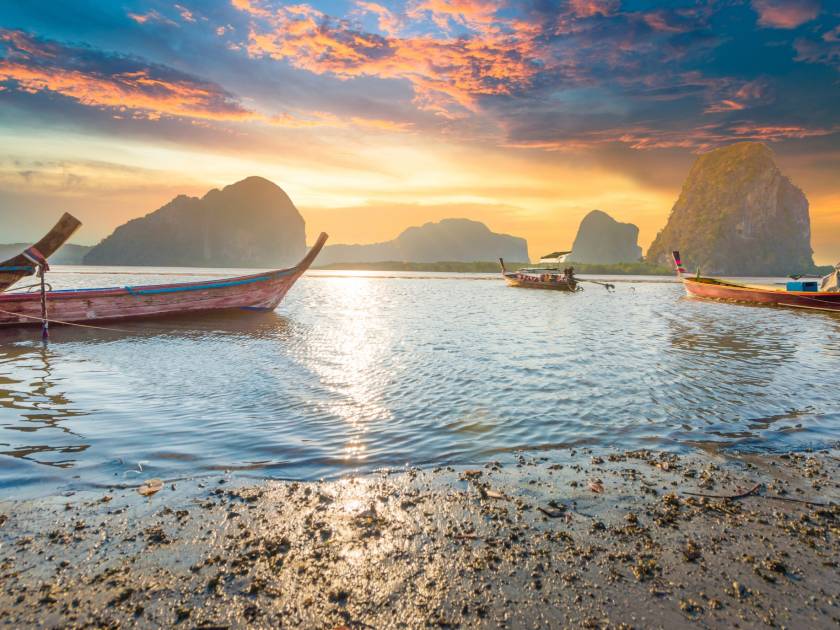
January is the middle of the dry season in Thailand, and a good time to visit, as the peak Christmas holiday crowds will have begun to dissipate. Expect daytime temperatures averaging between 27°C to 29°C.
How to get there? Fly to Phuket International Airport. You can base yourself in Phuket Town or head to Bang Rong Pier, where you can catch ferries or speedboats to islands within and beyond the bay, such as Koh Yao Yai.
13. Santiago and Fogo Island, Cape Verde

- Season: Winter/dry season
- Temperature: 28°C high, 19°C low
- Time zone: GMT -1
- Currency: Cape Verdean escudo
- Best for: Volcano hikes and African-Portuguese culture
Cape Verde is known for its winter sun, but it’s so much more than a ‘fly and flop’ destination, with a unique African-Portuguese culture and volcanic landscape ideal for exploring on foot. On the main island, Santiago, hike the verdant volcanic valley of Calabaceira, crossing a trail used by Charles Darwin to Cidade Velha, a UNESCO heritage site that was the first European colonial outpost in the tropics.
“It’s striking how important music and dance is for the locals. There is live music everywhere you walk,” says destination expert Marta Marinelli. “More than six genres of music originate from the island - including morna, funaná, coladeira, batuque and colá.”
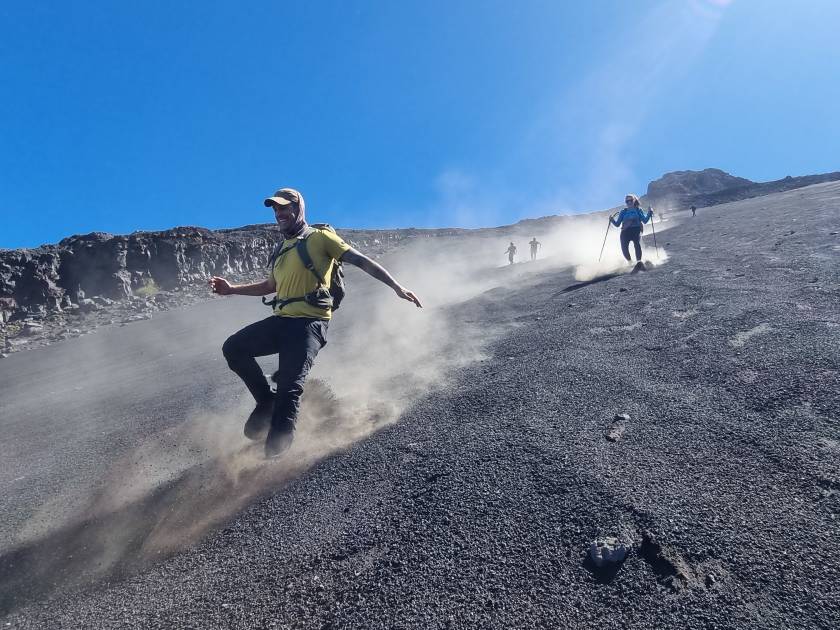
Catch the ferry over to Fogo Island to hike Pico do Fogo (2,829m/9,281ft). This stratovolcano is the highest point on Cape Verde - it’s great fun running back down the ashy slope. Hike through Chã das Caldeiras National Park, where you can hike through lava fields, coffee plantations and eucalyptus forest. Return to Santiago for a bit of beach time before heading home - we like Tarrafal, on the unspoilt northern coast.
January might be one of the coldest months in Cape Verde, but with temperatures averaging between 24°C to 26°C during the daytime, it’s ideal for walking and beach time.
How to get there? Fly to Nelson Mandela International Airport on Santiago Island - there are direct flights from Lisbon. It’s just a short 10-15 minute taxi ride to the capital, Praia.
14. Tian Shan, Kyrgyzstan

- Season: Winter
- Temperature: -5°C high, -15°C low (in Karakol)
- Time zone: GMT+6
- Currency: Kyrgyzstani som
- Best for: Visiting a truly remote area
A winter trip to the Tian Shan mountains of Kyrgyzstan will take you truly off the beaten track. Begin in the capital of Bishkek and take a road trip to the winter resort of Jyrgalan - there’s plenty to do en route, such as horse riding in Chon Kemin National Park.
In the Tian Shan mountains, visit the vast Issyk Kul lake. In Jyrgalan, spend the night in a traditional yurt camp with a sauna - your yurts will be heated with wood-burning stoves. Take a drive across the Chon Ashuu Pass at 3,800m (12,467ft) to Enilchek, an eerie, abandoned industrial town. You can stay the night at the only guest house, and bathe in the natural hot springs nearby.
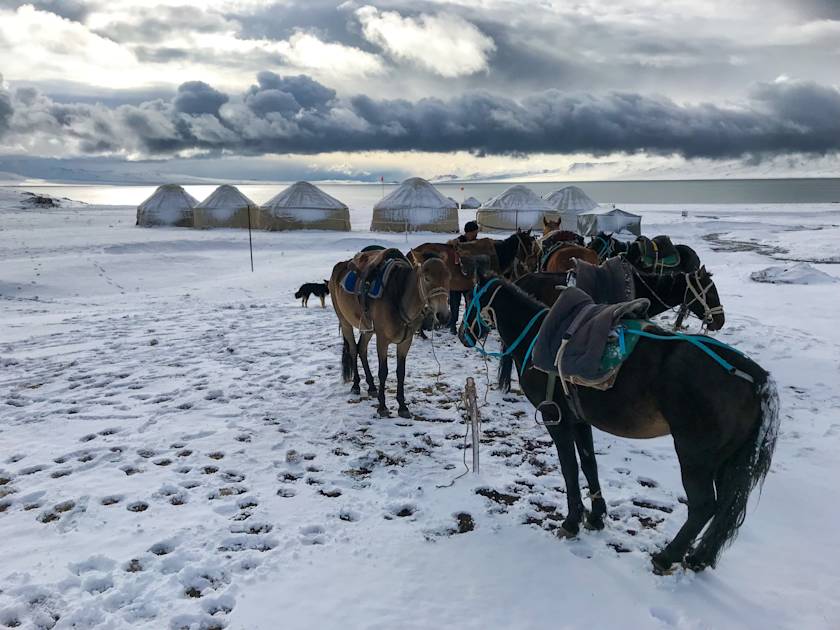
January is the coldest month in Kyrgyzstan, and temperatures really do plummet, averaging -10°C. Make sure you pack appropriately for the weather.
How to get there? Fly to Bishkek International Airport, which has connections to destinations in Russia, the Middle East and Asia - Zagreb is the only European connection. Hire the services of a local guide or book a small group trip to explore this remote region.
15. The Julian Alps, Italy and Slovenia

- Season: Winter
- Temperature: 1°C high, -7°C low (in Gozd Martuljek)
- Time zone: GMT+2
- Currency: Euro
- Best for: Atmospheric winter hikes
The Julian Alps stretch from Slovenia into Italy. In winter, their rocky slopes and pine forests are carpeted in snow, and there’s an abundance of wintery activities on offer. From the alpine village of Gozd Martuljek in Slovenia, you can hike up to Slemenova Spica (1,909m/6,236ft), where you’ll have amazing views of the imposing peaks. In Mezica you can kayak inside a mountain, 700m (2,296ft) under the surface, down the tunnels of a former mine.
Crossing the border into Italy, you can hike to Laghi di Fusine, two glacial lakes which freeze over in winter, or don your snowshoes and hike up to Rifugio Zacchi through a forest of beech and fir trees laden with snow.
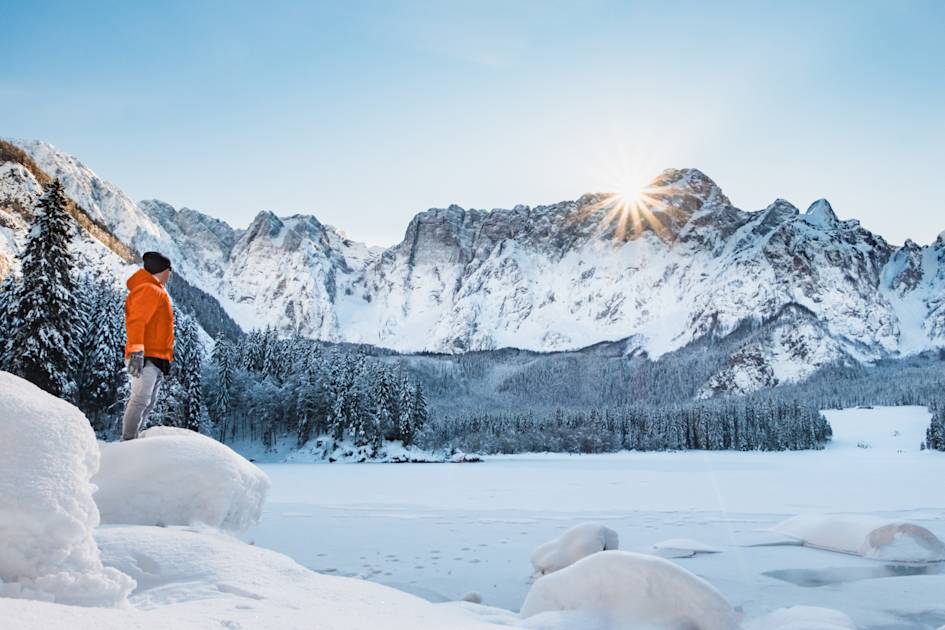
The Julian Alps is cold during January, with average daytime temperatures between -1°C to 1°C. The Fusine Lakes area in Italy is much cooler and temperatures often plummet down to -10 or -15°C. Snow is very common this time of year, but can’t be guaranteed.
How to get there? Fly to Ljubljana Airport and catch a taxi or transfer to Gozd Martuljek (around 60 minutes). You can also get taxis and buses to the neighbouring ski resort, the popular Kranjska Gora.
16. Mount Kilimanjaro, Tanzania

- Season: Dry
- Temperature: 33°C high, 17°C low (bottom of Kili)
- Time zone: GMT+3
- Currency: Tanzanian shilling
- Best for: Tackling an iconic summit
The distinctive, flat-topped silhouette of Kilimanjaro rises from the African savannah, towering 5,895m (19,340ft) above the landscape. Climbing it is an epic, multi-day challenge through a variety of different microhabitats: ancient rainforest, alpine moorland and stark volcanic rock.
There are a variety of different routes up Kilimanjaro. The Machame Route is often considered the most scenic, while the Lemosho Route, which is longer and more gradual, has the highest success rate. Meanwhile, the Rongai Route is one of the remotest - and therefore quietest - options.
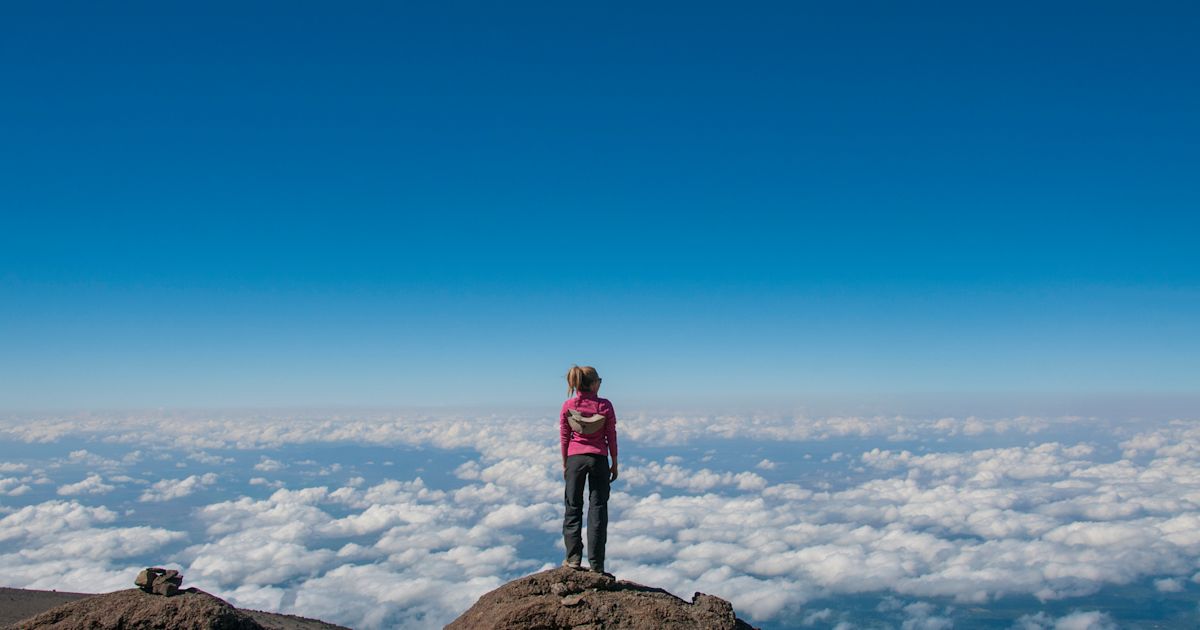
“One of the most memorable parts of the trail was the scramble up the Barranco Wall,” says Kirsty Holmes, who climbed Kili via the Machame Route for her fortieth birthday. “Tucking our hiking poles away, we tackled the interesting climb, carefully placing our hands and feet as we made our way along the narrow path that snaked up the 250m+ (820ft) rock face.”
You can trek year-round on Kilimanjaro, but January is one of the best times to trek to the summit. Not only is it a dry season (which runs from December to March), it’s also not as crowded as the high season (June to September) making it an excellent month for climbing. Daytime temperatures average 25°C at the bottom of the mountain, but it will get cooler as you climb - summit temperatures are likely to be between -5°C to -7°C, and you’ll likely encounter snow.
How to get there? Fly to Kilimanjaro International Airport via European hubs such as Amsterdam and Zurich. You can also fly to larger Dar es Salaam and take a domestic flight to Kilimanjaro.
17. The Coffee Triangle, Colombia

- Season: Dry
- Temperature: 26°C high, 17°C low (in Colombia)
- Time zone: GMT-5
- Currency: Colombian peso
- Best for: Coffee in the Andes
Colombia’s UNESCO-designated Coffee Triangle is the region between the cities of Manizales, Pereira and Armenia (which form a rough triangle), an area of rolling hills, coffee plantations and quaint towns. Hike through the Valle de Cocora, a valley in the central Andes known for its giant wax palm trees, and surrounded by cloud forest, jungle and mountains.
Visit one of the region’s many farms to have a tour of the coffee plantations and learn how the beans are grown and harvested - you’ll be able to try it for yourself, too. Visit Kasaguadua, a private nature reserve dedicated to preserving the Andean rainforest. The quaint town of Salento makes for a good base.
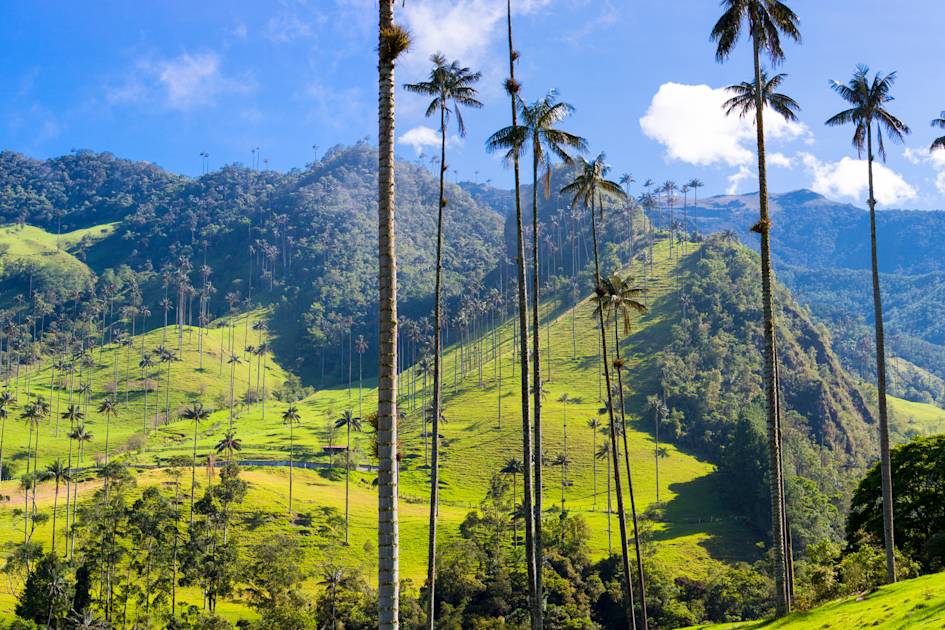
January is a good time to visit the Coffee Triangle. Temperatures average around 25°C, and you’ll experience some rainfall, despite this being the dry season - it’s a good time of year to hike.
How to get there? Manizales, Pereira and Armenia all have airports. Another option is to fly into the international airport in Bogota and travel by road to the Coffee Triangle (248 miles/500km), stopping off at other attractions on the way.
18. South Island, New Zealand

- Season: Summer
- Temperature: 23°C high, 13°C low (in Christchurch)
- Time zone: GMT+12
- Currency: New Zealand dollar
- Best for: A multi-activity coast to coast expedition
According to destination expert Philip Wyndham, New Zealand’s South Island is the “home of adventure.” There are numerous options available for an adventurous trip, including skydiving, paragliding and bungee jumping. To get a chance to experience a variety of activities, Philip recommends doing a multi-activity coast to coast route he’s created, which takes you across the width of the South Island.
Cycle along the West Coast Wilderness Trail and travel inland to Kumara. Hike over the Southern Alps along Goat Pass and then spend two days rafting the wild Waimakariri River onto Canterbury Plains. You can then cycle across the plains to the seaside town of New Brighton.

“The diversity is just unfathomable,” says Philip. “You set off from a coastline of pounding surf, travelling through ancient forests which haven't been logged - they’re like Jurassic Park in places, with large rivers. Then as you head east towards The Divide and cross the Southern Alps, you get into tussock country, with Alpine peaks all around you. From here you head into gorge country and through the Waimakariri Gorge. It's the most incredible sight - it’s like an axe wound in the land, which the river has caused.”
January is summer in New Zealand, with cloudless skies and temperatures averaging around 20°C, which is ideal for hiking and other outdoor activities.
How to get there? Fly to the international airport at Christchurch and after exploring the city, get a private transfer or shuttle bus to the expedition start point in Ross.
19. Yucatan Peninsula, Mexico

- Season: Dry
- Temperature: 30°C high, 20°C low (in Tulum)
- Time zone: GMT-6
- Currency: Mexican peso
- Best for: Beaches, jungles and cenotes
Mexico is a popular destination for winter sun, especially along the white sand beaches of the Yucatan Peninsula. But the area has so much more to offer than its beach resorts. Travel inland to discover two pristine UNESCO biosphere reserves, the Sian Ka'an Biosphere Reserve - where you can travel mangroves and lagoons on a boat tour, learning about Mayan culture from a local guide - and Ria Lagartos, known for its salt lagoons and home to Mexico’s largest flamingo population.
Go off the beaten track to explore the peninsula’s lesser known Mayan ruins - Ek Balam, Coba and Muyil. The Yucatan is pockmarked with hundreds of cenotes, water-filled sinkholes where you can swim. There are plenty of locally-run options, including The Tankah Cenotes, located in a reserve managed by the local Mayan community. And if you want a quiet beach to relax on, we recommend El Cuyo, a sandbar jutting out into the Gulf of Mexico.
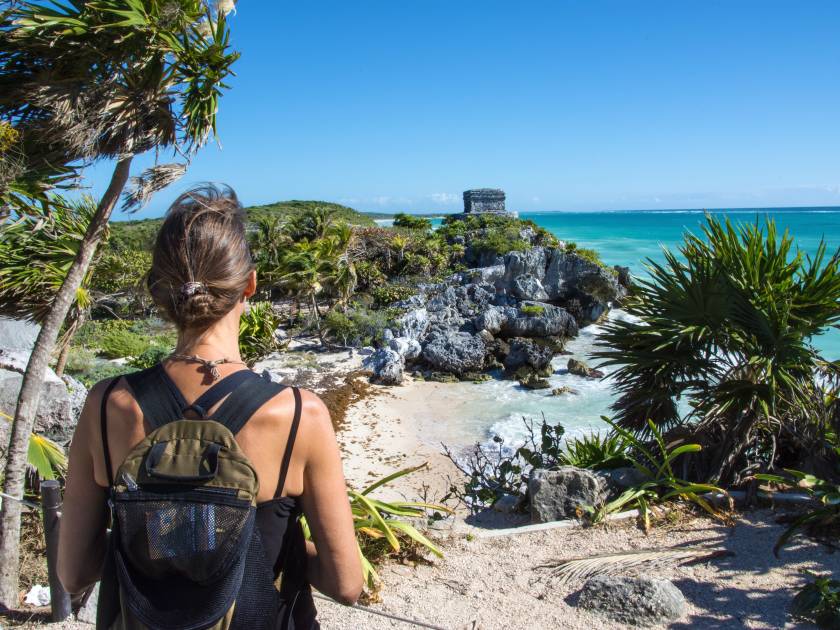
January is one of the coolest months in the Yucatan, but with temperatures averaging between 25°C to 28°C during the day, we reckon you’ll appreciate a refreshing swim after a jungle hike.
How to get there? Fly to Cancun International Airport - there are direct flights from the UK, the Americas and Europe.
20. The Dolomites, Italy

- Season: Winter
- Temperature: 3°C high, -11°C low (in Cortina d’Ampezzo)
- Time zone: GMT+1
- Currency: Euro
- Best for: A snowshoeing expedition
Enjoy some winter hut-to-hut trekking through the UNESCO-listed Dolomites, surrounded by iconic 3000m+ (9,842ft) high peaks like Tofana di Mezzo and Monte Cristallo, the granite crags dusted in snow.
Begin your journey with an Italian aperitivo in the glamorous town of Cortina d'Ampezzo, the "Pearl of the Dolomites," before heading into the Alpine wilderness. Hike through snowy pine forests and over the frozen River Boite as you ascend Lerosa Pass, and spend nights in cosy mountain huts like the iconic Rà Stua and Sennes, with hearty Tyrolean meals to warm you after a day in the snow. Spot wildlife such as chamois and ibex, and cap off your adventure with a climb to Lavinores peak (2460m/8,070ft),for 360-degree Alpine vistas, ending your trip in the serene, snowy village of Fodara Vedla.
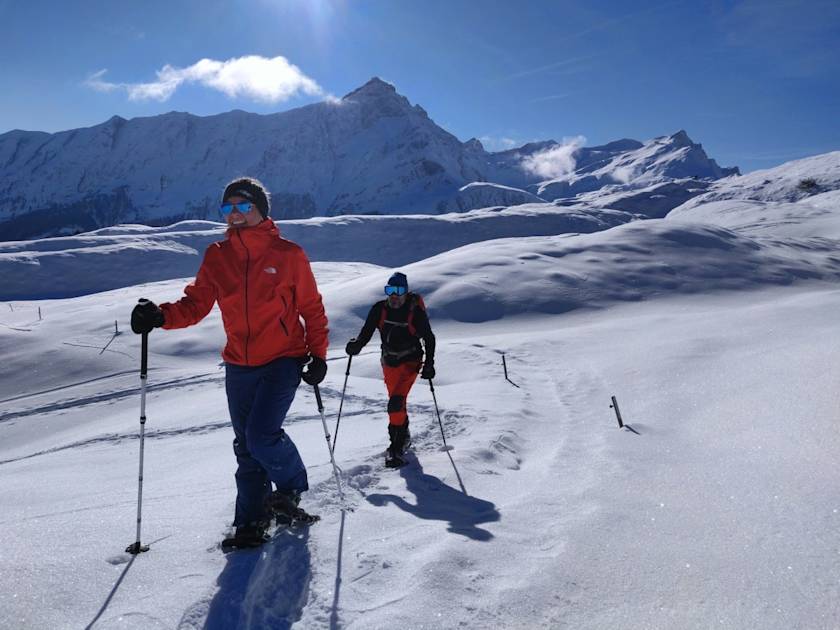
January is a good time to visit the Dolomites, away from the summer crowds. The average daytime temperature is -3°C in Cortina, and it’ll be cooler as you get higher up - there’s a high likelihood of snow. Whilst some high mountain trails might be closed, you’ll also have a chance to reach areas of the Dolomites only accessible in winter, when the rivers freeze over.
How to get there? Fly into Venice International Airport and grab a taxi or private transfer to Cortina d’Ampezzo, approximately two hours away by road.
Inspired? Check out our Adventure Holidays Departing in January



